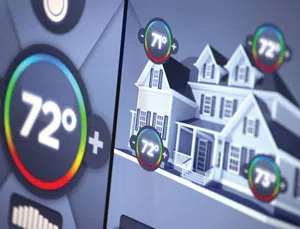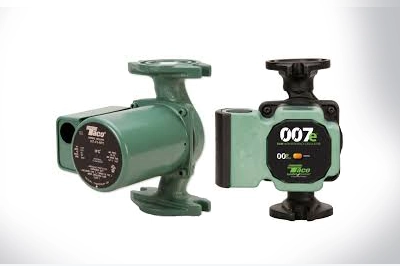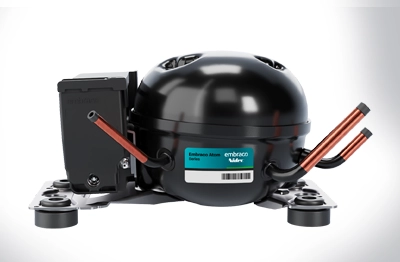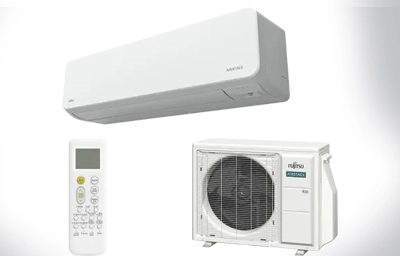The air surrounding us can be measured, filtered, circulated, cooled, heated, de-humidified and humidified; but first, HVACR professionals should understand it.
Airflow is one of the most over-looked functions of heating and cooling systems. System efficiency and comfort is compromised without the proper indoor airflow. A technician cannot properly charge an air conditioning system using the system superheat or subcooling methods when there is improper airflow.
A heating system without proper airflow may operate at an unsafe temperature or short cycle, reducing the efficiency and life of the furnace.
The quantity of air flowing across the evaporator changes the sensible to latent heat ratio of the air conditioning system, in turn changing the amount of moisture the system can remove. Nominal airflow for a central air conditioning system is 400 cubic feet per minute (CFM) per ton of cooling capacity.
Depending on ambient air conditions for a location, the quantity of air required across the evaporator for moisture removal could be as low as 325 CFM per ton. The airflow may be high as 450 CFM for environments with low humidity.
System efficiency, air filtering, sound levels and most important of all, human comfort, are all influenced by system airflow. The airflow required for each room in a building is determined by doing a room-by-room load calculation. If a load calculation is not preformed then it’s all guesswork.
Air Properties
To understand how and why airflow is based on load calculations, we must understand air properties. The properties of air are constantly changing with any change in temperature, humidity level or altitude.
Common properties of air are normally listed at sea level conditions, 1 atmosphere of barometric pressure and 68F. The following are two air properties used in general calculations made by HVAC technicians:
Density = 0.075 lbs. per cu. Ft.
Specific heat = 0.24 Btu
Using these two properties of air (density, specific heat) and time, we can derive a factor used to calculate airflow. The factor, Btuh and temperature difference are used to calculate the airflow volume required for heating and cooling.
This is a sensible heat factor used to calculate the volume of air based on the Btuh heating or cooling required for each room and the total Btuh for the structure. A room-by-room load calculation is the only acceptable method for determining required airflow for heating and cooling in each room.
Some contractors guess by using the square footage or volume of a room. That does not work! Let’s say we have two rooms 12’ x 12’ x 8’. The rooms are side by side with one on the corner of the house. The loads for the floor and ceiling should be the same, but the load on the walls will be different.
Room (a) has 96 Sq. Ft. of exposed wall and Room (b) has 192 sq. ft. The room (b) on the corner has twice the load on the wall and with a window in each wall the total can be a lot more. This means it must have more air entering for heat and cooling.
How the Numbers Work
Remember I said the Sensible Heat Factor for air is used in the calculation. This is how numbers work. The properties for air at standard conditions are; Specific heat 0.24 Btu, Density 0.75 lbs. per cu. ft. and 60 minutes per hour. When multiplied we obtain a sensible heat factor of 1.08 (Some books round up to 1.1).
0.24 x 0.075 x 60 = 1.08
Let’s say room (a) has a load of 3,144 Btu and room (b) has a load of 3,288 Btu without adding Btuh loss for windows. Using the formula: CFM = Btuh ÷ (1.08 x ΔT), we can figure the amount of air required for each room.
The temperature difference is determined using the sensible and latent loads calculated for the building. The sensible heat ratio is the sensible load divided by the total load of the building. Based on the sensible heat ratio (SHR) these are the recommended temperature difference across the evaporator.
SHR Air ΔT
0.75 To 0.79 21F
0.80 To 0.84 19F
0.85 To 0.90 17F
If we use for our cooling load, a sensible load of 29,479 Btuh and latent load of 6,471 Btuh we will have a total load of 35,950 Btu. The sensible heat ratio will be 29,479 Btuh ÷ 35,950 = 0.82, which gives us a 19F ΔT.
Now we plug the numbers into the formula for CFM.
Room (a) 3,144Btuh ÷ (1.08 x 19F) = 153 CFM
Room (b) 3,288Btuh ÷ (1.08 x 19F) = 160 CFM
When we look at the total airflow for the system, three scenarios can occur. For the same system, one contractor may use the 400 CFM per ton rule and adjust the blower for 1,200 CFM. The second contractor may use the proper method and adjust the blower for 1,437 CFM and the next contractor may base the airflow on the total Btuh for the system and adjust the blower for 1,754 CFM.
In our example for the rooms, there is only a 7 CFM difference in airflow. It doesn’t seem like it would make that much difference but it does. The temperature split though the evaporator and how long the system operates determines the amount of moisture that will be removed from the air, making the home comfortable, dry or humid.
With the nominal airflow of 400 CFM per ton which is the lower amount from our example. The air conditioning system will need to move tons of air a day in order to maintain set conditions. At standard conditions, air weighs 0.075 pounds per cubic foot. A three-ton air conditioning system, moving 400 CFM per ton, will have 1,200 CFM of air flowing through the system. 1,200 CFM multiplied by 0.075 lbs. per cubic feet equals 90 lbs. delivered each minute. Ninety pounds times 60 minutes per hour equal 5,400 pounds of air. If the system runs for 20 hours per day, we are looking at 108,000 lbs. or 54 tons of air moving through the system by a ? to ¼ hp blower motor. We usually do not think about how much work the blower motor has to perform.
Increased Efficiency
Over the years, manufacturers have changed their design parameters in order to increase equipment efficiency to meet the Seasonal Energy Efficiency Standards (SEER). In the 1970s the evaporator design temperature started to climb from 40F to 45F and now as high as 50F.
With larger condensers, larger evaporators and smaller compressors the compression ratio is reduced requiring less electrical energy to do the same work in Btuh as the older units. The problem is the older systems with a 40F evaporator had close to a 30 percent latent capacity enabling high humidity removal and the newer systems average 20 percent latent capacity. This makes it more important than ever to have the airflow right.
This means when installing or servicing a system, matching the airflow with the sensible and latent loads is vital with high efficiency systems to get the proper moisture removal.
An analogy I used when teaching technicians pertains to the automotive industry. When you bring your car or truck in for service, you expect the job to be done right. Spark plugs gaped to specs, right air pressure in tires, proper oil level etc.
If your gas mileage drops after the vehicle is serviced, you would complain, bring it back to the dealer and demand it be serviced at no cost to you. It is a lot harder for our customers to tell if their air conditioning system is operating at peak efficiency. They must depend on us to preform equipment service and installations, as they should be, to render efficiency and the comfort in their home you would expect.





